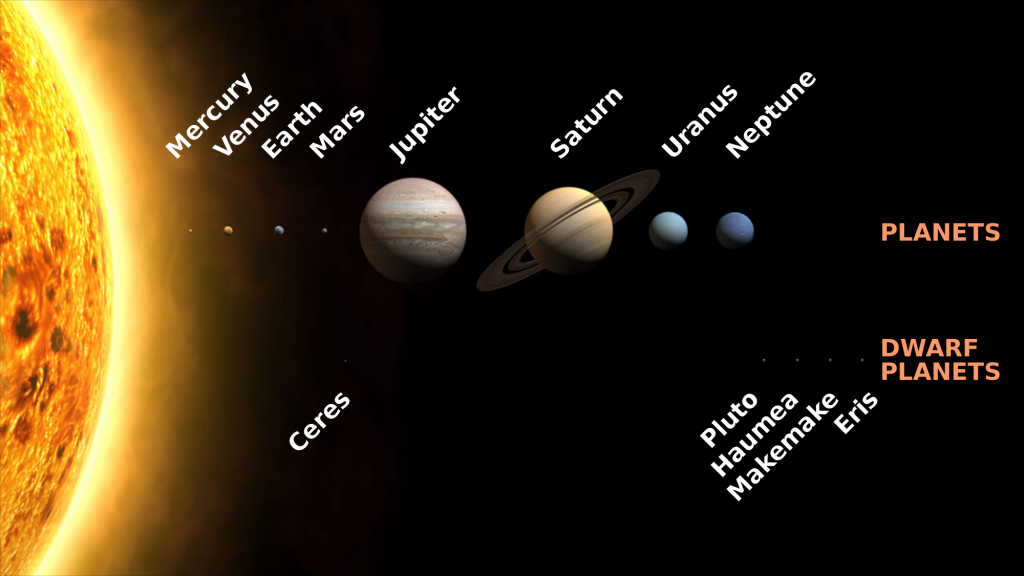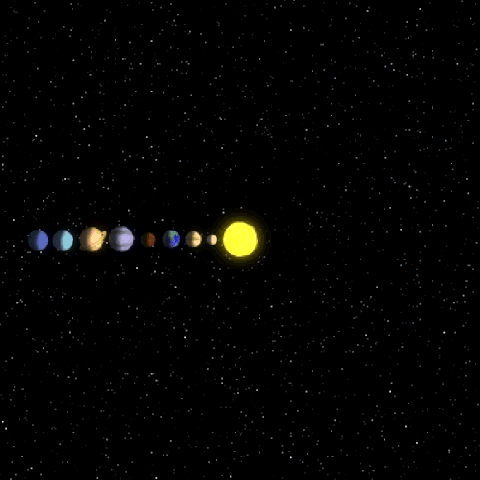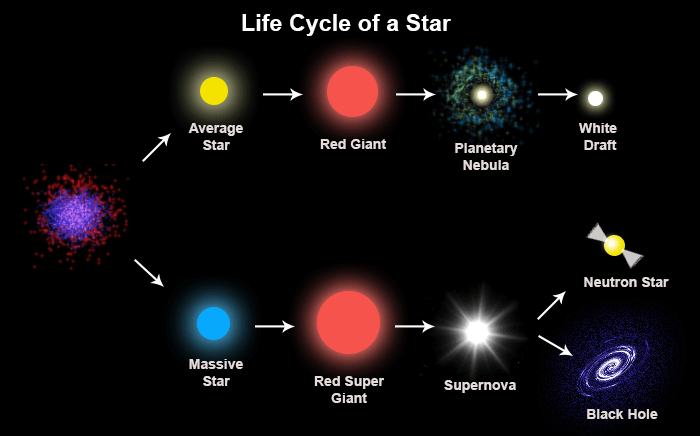Contents
Space
Definitions
Star – A ball of hydrogen (and helium) giving out heat and light from nuclear fusion.
Planet – A sphere of rock or gas orbiting a star.
Dwarf planet – Small ‘planets’ that do not meet all the criteria to be called a planet (i.e. a planet has to be large enough to ‘clear its neighborhood’ by gravity pulling in any nearby small objects).
Moon – A sphere of rock orbiting a planet.
Asteroid – A lump of rock (may or may not be orbiting anything!).
Comet – A ball of ice, dust, and gas orbiting a star in an elliptical orbit.
Meteor – A tiny piece of rock.
Galaxy – A group of billions of stars.
Universe – Everything that exists! Contains billions of galaxies.
Solar System
A solar system consists of a star with objects orbiting it. Our solar system has 8 planets (and some other objects) orbiting our star – the sun.
A satellite is an object that orbits a planet. There are natural satellites such as our moon and artificial satellites, which are man-made.
Milky Way
Our solar system is part of a group of billions of stars known as the Milky Way – this is our galaxy. The universe contains billions of galaxies.
Red Shift
The same effect happens with light when the objects are moving at very high speeds, such as stars.
The light emitted from a star that is moving away from you will be shifted to a lower frequency, moving it to the red end of the spectrum. (Almost) all stars are red-shifted. This means that they are all moving away from us (and from each other). This suggests that the universe is expanding.
More distant galaxies have more red shift than closer galaxies, which means the distant galaxies are moving faster.
Big Bang
If the universe is currently expanding, that suggests that the universe used to be smaller and that a force started the expansion. This theory for the beginning of the universe is known as the Big Bang theory. The Big Bang theory states that approximately 14 billion years ago, all the matter in the universe occupied a very small, dense, hot space. This then expanded rapidly outwards (exploded), starting the expansion that we see today.
- Which process causes stars to give out heat and light?
- Your answer should include: nuclear / fusion
- Light from stars that are moving away from an observer is shifted towards which end of the spectrum?
- red
- What is the name for a cloud of dust and gas that will be pulled together by gravity to form a star?
- nebula
- What element takes part in fusion in a star when it is in the main sequence stage?
- hydrogen
- What is the next stage in the life of a large mass star after it is a super red giant?
- supernova
Orbits
Planets orbit the sun in almost circular objects. Moons and artificial satellites orbit planets in almost circular objects. Orbits occur due to the force of gravity.
Objects traveling at a constant speed in a circle are changing velocity (because velocity is speed and direction). The motion of the planet would cause it to fly off into space, but the force of gravity is attracting the planet towards the sun. The combination of the momentum of the object and the force of gravity towards the center of the circle means that the planet travels in a circular path around the sun. As there is no friction or air resistance in space, the planet continues at a constant speed in this orbit.
The gravitational force is stronger the closer you get to the star/planet. The stronger the force, the faster the orbiting object needs to travel to remain in orbit (rather than being pulled to the center). If the speed of the object changes, the radius of the orbit will also change. The faster the object, the smaller the radius of the orbit.
Life Cycle of a Star
1 - Nebula
Gravity pulls gas cloud of (hydrogen) gas and dust together.
2 – Protostar
As gravity causes contraction, the particles collide more often and the temperature and pressure increase.
3 - Main Sequence
As the temperature (and therefore the kinetic energy of the particles) increases, eventually nuclear fusion occurs, releasing heat and light. This is called the ‘main sequence’ stage of the life cycle. Most of the star's lifetime will be in this stage. The outwards expansion of the star due to fusion is in equilibrium with the inwards contraction of the star due to gravity, so the star remains at a constant size.
Low Mass Stars (i.e. our sun)
4 – Red Giant
As the hydrogen runs out, fusion of helium begins. The star expands and cools (red).
5 – White dwarf
The red giant becomes unstable and ejects its outer layer of dust and gas, leaving behind a hot, dense core.
6 – Black Dwarf
The white dwarf cools down and eventually stops releasing energy.
Large Mass Stars
4 – Super Red Giant
As the hydrogen runs out, fusion of helium begins. The star expands and cools (red). Fusion of heavier elements (up to iron) occurs.
5 – Supernova
The star contracts and expands a number of times due to nuclear fusion of heavy elements. Eventually, the star explodes as a supernova, producing elements heavier than iron and spreading them throughout the universe.
6 – Neutron Star or Black Hole
The supernova leaves behind a very dense core called a neutron star. The most massive stars will leave a black hole, which is so dense that not even light can escape its gravity.
All the naturally occurring elements (see the periodic table) have been created as the products of fusion in stars and released into the universe via supernovas.







